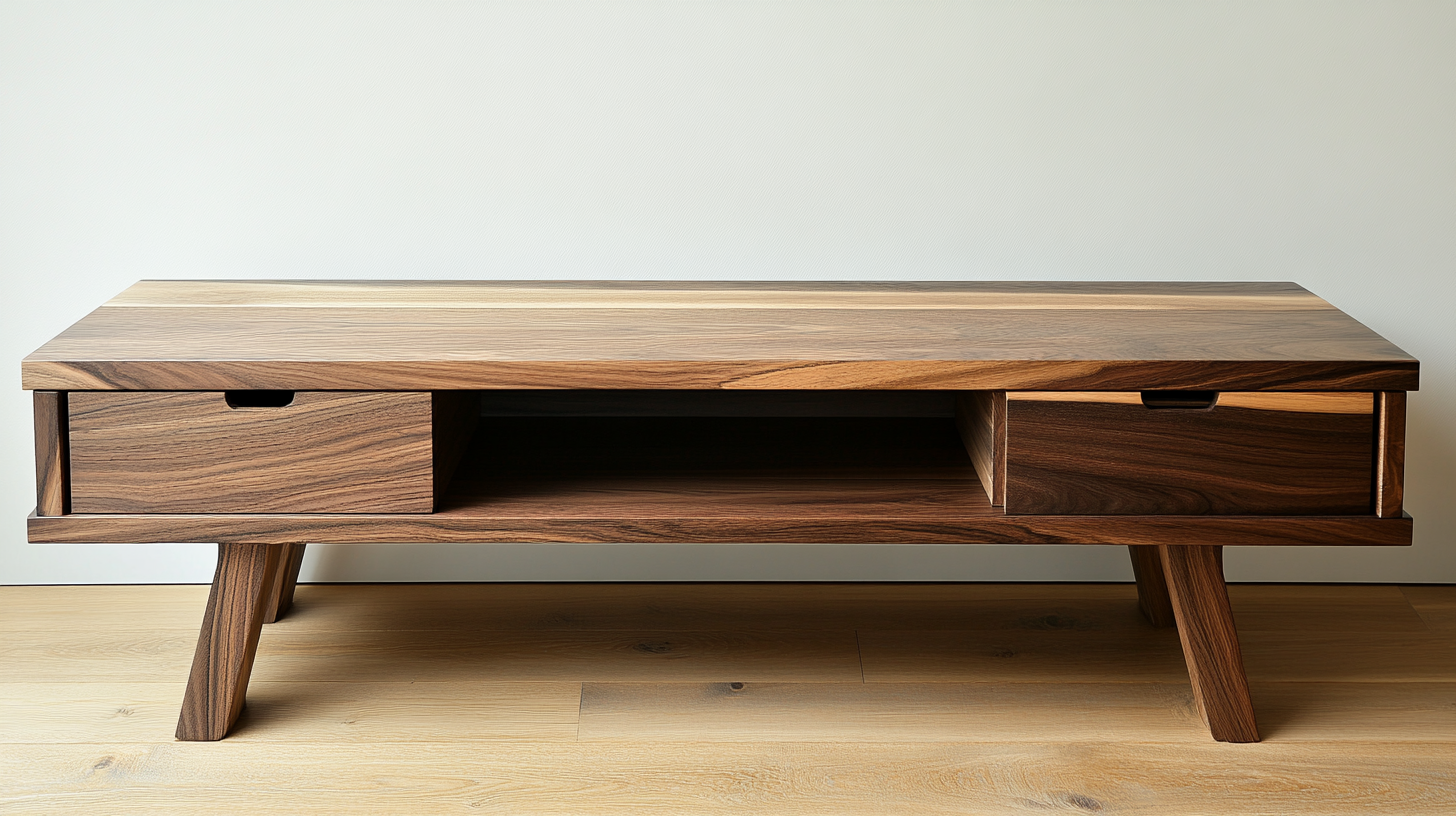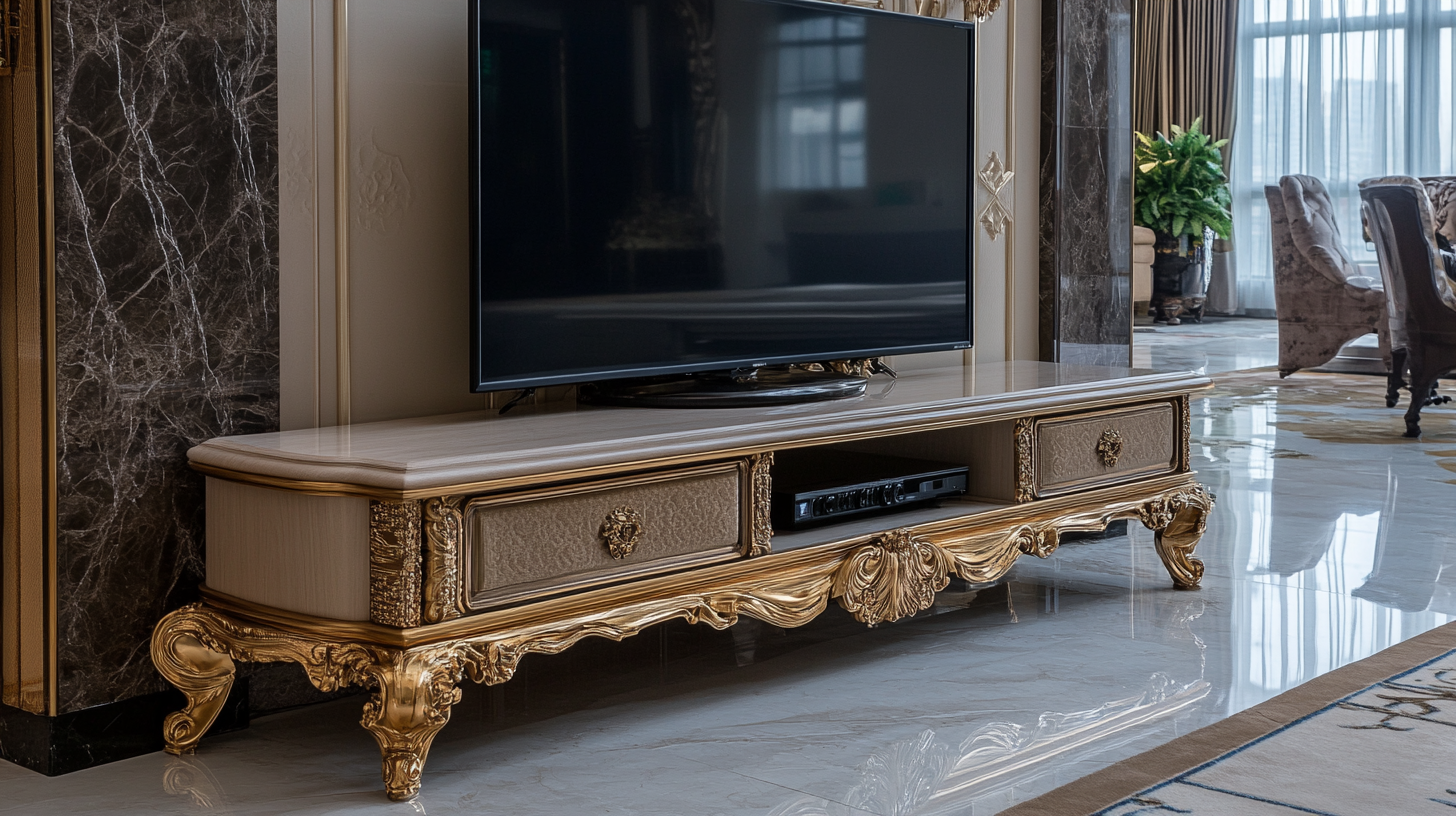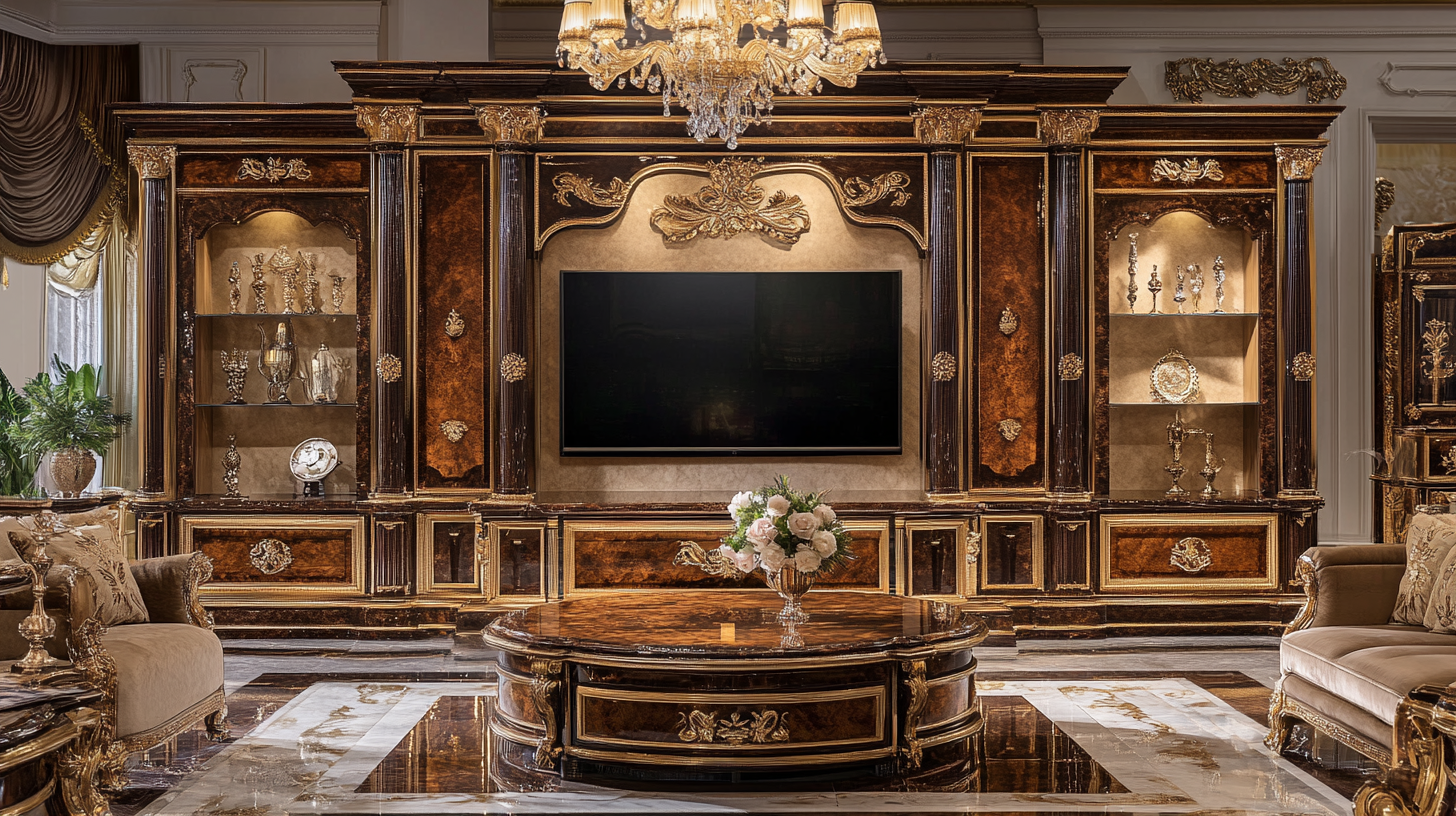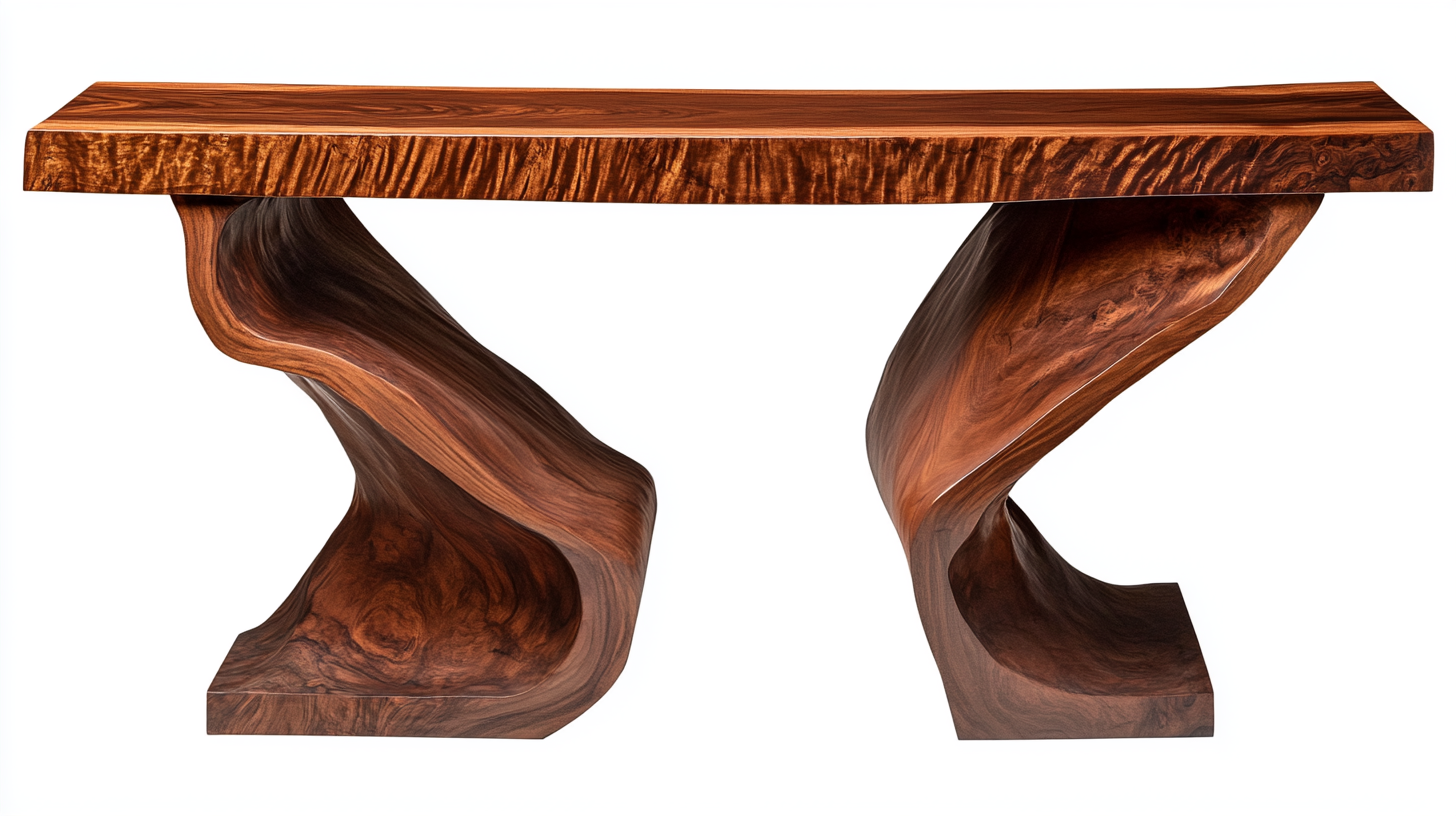In the world of home furnishings, the Tv Console Table holds a pivotal role, blending functionality with aesthetic appeal. As interior design trends evolve, the demand for high-quality Tv Console Tables has surged, leading to an increased focus on production standards. However, with such demand comes a host of challenges that manufacturers must navigate, from material selection to design execution. These common issues can significantly impact the final product, affecting both performance and customer satisfaction.
Understanding the intricacies involved in Tv Console Table production is essential for both manufacturers and consumers. By identifying and addressing these challenges, companies can ensure their products not only meet market expectations but also enhance the overall user experience. This blog will delve into the common production issues faced in the industry, providing insights and solutions to elevate the standards of Tv Console Table manufacturing. Whether you are a manufacturer seeking to improve your processes or a consumer looking to make informed purchasing decisions, this discussion will be invaluable.

When it comes to producing TV console tables, one of the most significant challenges lies in material selection. Manufacturers often grapple with the myriad options available, each presenting its own set of advantages and drawbacks. For instance, wood is a popular choice due to its durability and aesthetic appeal, yet sustainable sourcing remains a crucial concern. With the rising demand for eco-friendly products, it becomes imperative for producers to select materials that not only withstand the test of time but also align with environmental standards. Another challenge arises from the use of composite materials. While they can offer cost efficiencies and design flexibility, their long-term durability can be questionable. Some consumers prioritize sturdiness over price; thus, manufacturers must ensure that the materials used can support everyday wear without compromising the integrity of the product. This ongoing tension between cost, quality, and consumer expectations is a significant hurdle in the design and production process. Furthermore, the finishing processes that enhance the visual appeal of a TV console table can also complicate material selection. A finish may provide a beautiful sheen or added protection but could involve toxic chemicals that clash with growing consumer preferences for safer products. As companies strive for innovation and functionality, finding the right balance amongst aesthetics, sustainability, and performance becomes a pivotal part of creating a successful TV console table.

In the rapidly evolving market of television console tables, quality control measures play a critical role in ensuring that products meet consumer expectations and industry standards. As production processes become increasingly complex, integrating effective Total Quality Management (TQM) practices is essential. TQM emphasizes that all stakeholders, from suppliers of raw materials to assembly line workers, must be held accountable for product quality. According to recent industry studies, nearly 85% of quality issues in furniture production can be traced back to deficiencies in supply chain management and communication.
One significant challenge faced in the production of TV console tables is maintaining consistency in material quality. Reports show that variations in raw materials can lead to structural weaknesses and a finish that does not meet aesthetic standards. Implementing stringent quality control measures at each stage—from raw material procurement to final assembly—helps mitigate these risks. Regular inspections and standardized testing procedures are crucial to ensure that every component meets the predefined quality thresholds.
Moreover, as consumer preferences shift towards sustainable and eco-friendly products, manufacturers must adapt their quality control strategies accordingly. A survey conducted by the Furniture Manufacturers Association indicated that 72% of consumers now consider the environmental impact of their purchases when shopping for furniture. Therefore, incorporating quality control that not only assesses durability but also environmental compliance is vital. By embracing these comprehensive quality measures, producers can enhance consumer trust and ensure that their TV console tables are not only functional but also responsibly made.

The production standards of TV console tables are inherently tied to their design flaws, which can significantly impact overall quality and consumer satisfaction. Recent reports have highlighted how leading manufacturers, such as BMW, maintain high standards through world-class factories and careful craftsmanship. According to a study by the Furniture Industry Association, nearly 30% of furniture defects stem from poor design choices, affecting functionality and aesthetics alike.
When unaddressed, design flaws can lead to increased production costs and reduced product lifespan. For instance, the introduction of innovative materials and production techniques is crucial to meeting consumer demand for both style and durability. Focusing on ergonomic design not only enhances usability but can also minimize returns and complaints. A report indicates that 22% of consumers cite discomfort as a primary reason for dissatisfaction with furniture purchases, underlining the importance of integrating user-centric design in production standards.
Moreover, as automation becomes more prevalent in retail and manufacturing, there are emerging challenges. The physical dimensions of service robots can pose risks in complex environments, echoing the need for rigorous design considerations. Ensuring that production processes align with the latest technology while maintaining high design integrity is essential for the longevity and success of TV console tables in today's competitive market.

The manufacturing of TV console tables presents unique environmental challenges that must be addressed to achieve sustainable production standards. According to a report from the Furniture Industry Research Association (FIRA), about 70% of furniture manufacturers are now prioritizing eco-friendly materials in their product lines, reflecting a significant shift towards environmental responsibility in the industry. This transition includes the use of sustainably sourced wood, non-toxic finishes, and recycled materials, reducing the overall carbon footprint associated with manufacturing processes.
Moreover, the energy consumption during the production of TV console tables is another critical environmental consideration. The Environmental Protection Agency (EPA) reports that industrial sectors, including furniture manufacturing, are responsible for approximately 25% of total greenhouse gas emissions in the United States. To combat this, many manufacturers are adopting energy-efficient technologies and practices, such as utilizing renewable energy sources like solar power and optimizing their production processes to minimize waste and emissions. This not only aids in compliance with increasingly stringent regulations but also appeals to environmentally conscious consumers.
Water usage is another vital aspect of environmental consideration in the manufacturing of TV console tables. A study by the Sustainable Furniture Council indicated that the furniture industry could reduce water consumption by 30% by implementing better manufacturing techniques and recycling wastewater. As sustainability takes center stage, manufacturers are exploring innovative approaches to conserve water, such as closed-loop systems and rainwater harvesting, significantly impacting the overall environmental impact of their operations. These steps are essential to meet both regulatory standards and the expectations of a growing demographic of eco-aware consumers.
The production of TV console tables is heavily influenced by the gap between consumer expectations and manufacturing capabilities. According to a recent report by the Furniture Today Industry, over 70% of consumers prioritize functionality and design when purchasing furniture, specifically looking for pieces that can accommodate their technological devices while also enhancing their home aesthetics. However, manufacturers often struggle to meet these demands due to limitations in materials and production processes.
One critical aspect is the expectation for sustainability in products. A survey conducted by the American Home Furnishings Alliance revealed that 65% of consumers are willing to pay more for eco-friendly furniture options. Yet, many manufacturers still rely on traditional materials that don't align with these consumer preferences. Innovations in manufacturing techniques are essential for producing sustainable TV console tables that can appeal to environmentally conscious buyers without significantly increasing production costs.
Furthermore, customization has become a significant expectation among consumers. A study by the International Furniture and Design Association indicated that nearly 58% of consumers desire personalized options in their furniture, allowing them to select colors, finishes, and sizes that match their unique styles. Despite this, many manufacturers find it challenging to implement flexible production systems that can accommodate such variations. The discrepancy between consumer desires and what is feasible in mass production remains a pressing issue, highlighting the need for adaptive strategies in the industry.
